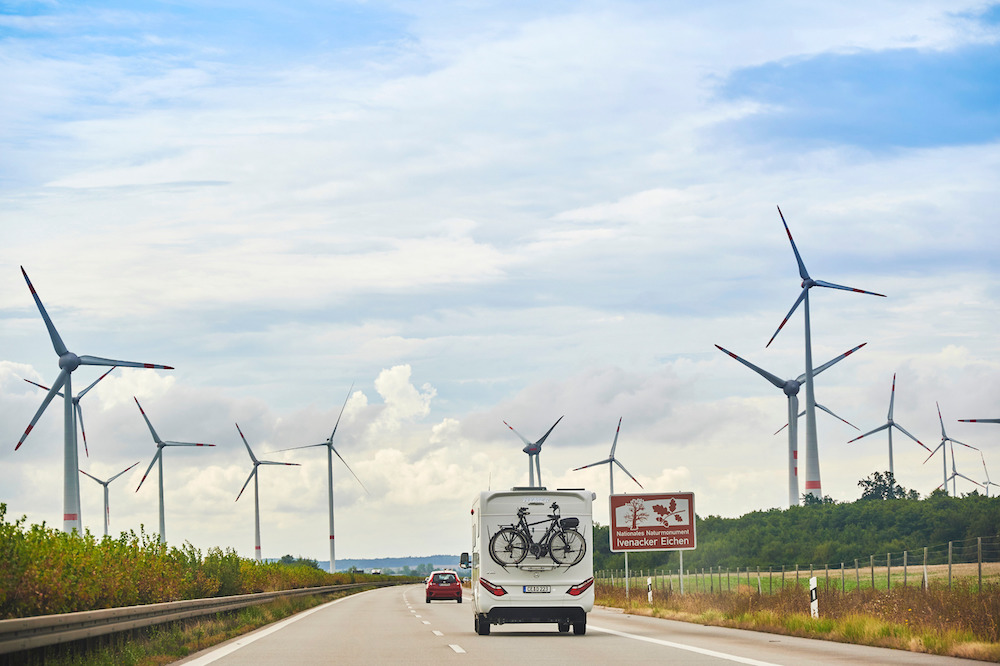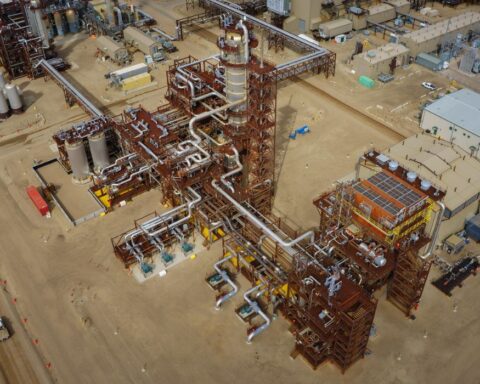Fossil fuel demand falls 25% by 2030, fossil sector methane emissions drop by three-quarters, energy efficiency adoption doubles, global renewable energy capacity triples, and annual clean energy investment rises from US$1.8 trillion in 2023 to $4.5 trillion by the early 2030s in the latest net-zero roadmap published this morning by the International Energy Agency.
“The pathway to 1.5 ̊C has narrowed in the past two years, but clean energy technologies are keeping it open,” said IEA Executive Director Fatih Birol, in a release summarizing the 227-page document. That puts the onus on COP 28 negotiators in Dubai later this year to “commit to stronger ambition and implementation,” the IEA adds.
The report lands scarcely a week after Calgary hosted the World Petroleum Congress, the self-styled “Olympics of oil and gas”, where fossil industry delegates took the IEA and the Canadian government to task for stressing the opportunity and the urgency in the shift to carbon-free energy.
“Keeping alive the goal of limiting global warming to 1.5 ̊C requires the world to come together quickly,” Birol said. “The good news is we know what we need to do—and how to do it,” but “we also have a very clear message: Strong international cooperation is crucial to success. Governments need to separate climate from geopolitics, given the scale of the challenge at hand.”
‘Extraordinary Growth’ in Clean Energy Tech
The IEA roadmap is an update of the landmark Net Zero by 2050 scenario that the Paris-based agency first published in May, 2021. It factors in “significant changes” since then in the global energy landscape—the economic rebound after the COVID-19 pandemic, the “extraordinary growth” of some clean energy technologies, increased investment in fossil fuels, and “stubbornly high emissions”.
“In the updated net zero scenario, a huge policy-driven ramping up of clean energy capacity drives fossil fuel demand 25% lower by 2030, reducing emissions by 35% compared with the all-time high recorded in 2022,” the IEA writes. With fossil fuel demand falling 80% by 2050, “no new long-lead-time upstream oil and gas projects are needed, neither are new coal mines, mine extensions, or new unabated coal plants.”
The scenario also shows sharp increases in sales of electric vehicles and heat pumps.
The agency calls for continued investment in some oil and gas projects, with “sequencing” of clean energy investment to prevent price spikes or supply gluts. It also indicates potential for an “equitable transition that takes different national circumstances into account,” concluding that countries can meet the UN Sustainable Development Goal for energy—which the IEA frames as “full access to modern forms of energy for all by 2030”—for just $45 billion per year, just over 1% of the investment across the energy sector.
The IEA warns that failing to pick up the pace on the energy transition by 2030 will leave countries too reliant on carbon dioxide removal (CDR) technologies that are “expensive and unproven at scale.” Delaying action now would mean future generations can only keep a 1.5°C climate stabilization target alive by removing five billion tonnes of CO2 per year from the atmosphere in the second half of the century.
“Removing carbon from the atmosphere is very costly,” Birol said. “We must do everything possible to stop putting it there in the first place.”
‘Electricity is the New Oil’
Dave Jones, global insights lead at the Ember think tank, said the transformation envisioned in the IEA report “is not rocket science, but it does require the determination and urgency of a space race. Importantly, emerging economies need investment to enable them to enter the race, which ultimately will benefit us all.”
He added that the biggest change since the IEA’s 2021 energy outlook “is the downgrading of carbon capture, hydrogen, and bioenergy, and the upgrade awarded to renewables, efficiency, and electrification.” That shift shows that “electricity is the new oil,” requiring world leaders to “think big and build big.”
So far, however, the reductions in fossil extraction that the IEA is counting on have not materialized: last week, Global Energy Monitor (GEM) reported that plans for new fossil power plants, almost all of them burning gas, grew 13% last year, with the largest share of new demand coming from China and Southeast Asia.
“There is now 783 gigawatts (GW) of oil- and gas-power capacity under development—projects that are either announced or in the pre-construction and construction phases,” wrote Jenny Martos, project manager of GEM’s global gas tracker, and Julie Joly, the organization’s oil and gas programme director, in a post for Carbon Brief. “These represent a stranded asset risk of hundreds of billions of dollars and potentially locking in tens of billions of tonnes of carbon dioxide (CO2) emissions.”
So far, about one-quarter of the new plants are under construction, GEM reported. But if they’re all built and go into service, “they could divert resources from more cost-effective and lower-carbon alternatives,” the two authors warned.
A Fossil Industry Pathway
Those stubborn numbers helped fuel arguments for a slower transition and increased fossil fuel investment during the World Petroleum Conference September 17-21. While the conference theme was Energy Transition: The Path to Net Zero, the fossil delegates attending the show were mostly interested in the technologies the IEA is now largely dismissing.
“The reality on the ground is that despite concerted effort to move to alternatives, global coal consumption is at record levels… with demand still robust,” Saudi Aramco President and CEO Amin Nasser told participants. “As the recent energy crisis has shown, compounded by the conflict in Ukraine, the world wobbles if these realities are ignored or wished away, and the public anger we have already seen could ultimately derail climate ambition and action themselves.”
“If we really want to be faithful to the idea that we will be transitioning, we have to also make sure that transitioning happens whereby you end up attending to energy security, ensuring that energy is still affordable, and does not act as an impediment to economic prosperity and growth,” agreed Saudi Energy Minister Abdulaziz bin Salman Al Saud. “And if you don’t do all of the above, I’m sorry, but I don’t think you could attend to climate change issues.”
Natural Resources Minister Jonathan Wilkinson brought a different message to the conference, issuing a “call to action” for the industry to take more “substantive” steps to reduce its emissions, the Globe and Mail reported. “We need to see purchase orders for equipment that’s actually going to be put in the ground,” he said, adding that “countries that focus on producing ultra-low-carbon” fossil fuels “are likely to be the last producers standing” as global demand declines.
Alberta Premier Danielle Smith shot back that Wilkinson’s remarks were “tone deaf” and a “slap in the face” to conference participants. “This is not an industry that’s winding down,” she declared. “It’s an industry that’s transitioning away from emissions.”
That exchange unfolded just a day before former environment and climate minister Catherine McKenna, now CEO of Climate and Nature Solutions and chair of the UN Secretary General’s expert group on net-zero emissions, took companies like Suncor Energy to task for doubling down on oil sands production. She said companies like Suncor are sidelining their renewable energy strategies, devoting record profits to shareholder dividends and executive compensation, and demanding taxpayer subsidies for the carbon capture projects they say they want to build—all after a summer that “scorched the Earth”.
“These announcements are shameful, but at least we know what we’re dealing with. After years of pious corporate announcements and feel-good advertising, it’s magical thinking to believe the oil and gas sector has anything but its own profits at heart,” McKenna wrote for the Globe.
“This is why it’s time to do what a majority of Canadians—including in Alberta—believe is necessary and put a hard cap on emissions from Canada’s oil and gas industry.”
Declining Fossil Investment
But despite the bullish rhetoric at the “Olympics of oil and gas”, with oil prices above US$90 per barrel and some analysts predicting a high above $100 by year’s end, “government policies to fight climate change are discouraging oil companies from investing heavily in new production even as they turn in record profits,” Reuters reported last week, just as the conference was concluding. That had fossil delegates warning that a lack of investment in new extraction “could exacerbate energy shortages in poor countries and fuel inflation,” the news agency said.
“The current transition shortcomings are already causing mass confusion across industries that produce and/or rely on energy,” said Aramco CEO Nasser.
“If we don’t maintain some level of investment in the industry, you end up running short of supply, which leads to high prices,” said ExxonMobil CEO Darren Woods, who admitted his company’s oil reserves are declining by 5 to 7% per year.
But to commit to the “billions and billions of dollars” in new investment that it would take to increase oil production by 100,000 barrels per day, Cenovus Energy Executive Chair Alex Pourbaix said fossil companies would “have to wait for some more clarity on the government front.” When Pourbaix first started asking for “clarity” on carbon capture and storage, he was demanding about C$50 billion in taxpayer subsidies to get the technology in place.
But some of the companies’ biggest financial backers might have other ideas. Earlier this month, a study by management consultants at Deloitte said some big, institutional investors might be prepared to cut their dividends from oil and gas companies if it meant freeing up money for energy transition spending, the DayFR Euro newsletter reported.
“Investors who own $2.3 trillion in stocks in the global oil and gas industry are changing their expectations for growth markets more quickly than executives at energy companies,” the news story stated, citing a Deloitte study. “About 75% of investors surveyed said they would continue to hold stocks to accelerate investment in low-carbon technologies, even if returns fell by as much as 3%.”
This article was first published in The Energy Mix. Read the original article here.







